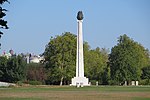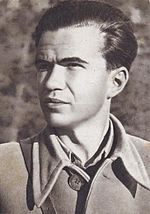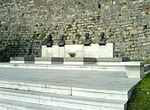Museum of Contemporary Art, Belgrade

The Museum of Contemporary Art (Serbian: Музеј савремене уметности, romanized: Muzej savremene umetnosti) is an art museum located in Belgrade, Serbia. It was founded in 1958 as the Modern Gallery, making if one the first museums of this type in the world. It was moved into the current building in the Ušće neighborhood of New Belgrade in 1965. The building is a masterpiece of architects Ivan Antić and Ivanka Raspopović, a short-lived but highly successful partnership, which also produced the 21 October Museum in Šumarice Memorial Park in Kragujevac. The collection contains more than 35,000 works of art. The museum collects and displays art works produced since 1900 in Serbia and Yugoslavia. It also organizes international exhibitions of modern and contemporary art. The museum was closed for renovation between 2007 and 2017. After several deadlines were pushed back, the museum was finally reopened for visitors on 20 October 2017.
Excerpt from the Wikipedia article Museum of Contemporary Art, Belgrade (License: CC BY-SA 3.0, Authors, Images).Museum of Contemporary Art, Belgrade
Ушће, Belgrade New Belgrade (New Belgrade Urban Municipality)
Geographical coordinates (GPS) Address Phone number Website External links Nearby Places Show on map
Geographical coordinates (GPS)
| Latitude | Longitude |
|---|---|
| N 44.819444444444 ° | E 20.442222222222 ° |
Address
Музеј савремене уметности
Ушће 10
11070 Belgrade, New Belgrade (New Belgrade Urban Municipality)
Central Serbia, Serbia
Open on Google Maps









